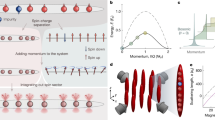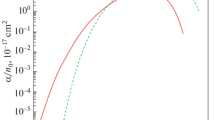
Access this book
Tax calculation will be finalised at checkout
Other ways to access
About this book
Similar content being viewed by others
Table of contents (5 chapters)
-
Front Matter
-
Back Matter
Editors and Affiliations
Accessibility Information
PDF accessibility summary
This PDF is not accessible. It is based on scanned pages and does not support features such as screen reader compatibility or described non-text content (images, graphs etc). However, it likely supports searchable and selectable text based on OCR (Optical Character Recognition). Users with accessibility needs may not be able to use this content effectively. Please contact us at accessibilitysupport@springernature.com if you require assistance or an alternative format.
Bibliographic Information
Book Title: Theory of the Inhomogeneous Electron Gas
Editors: S. Lundqvist, N. H. March
Series Title: Physics of Solids and Liquids
DOI: https://doi.org/10.1007/978-1-4899-0415-7
Publisher: Springer New York, NY
-
eBook Packages: Springer Book Archive
Copyright Information: Springer Science+Business Media New York 1983
Hardcover ISBN: 978-0-306-41207-3Published: 31 July 1983
Softcover ISBN: 978-1-4899-0417-1Published: 26 June 2013
eBook ISBN: 978-1-4899-0415-7Published: 11 November 2013
Edition Number: 1
Number of Pages: XIV, 396
Topics: Nuclear Physics, Heavy Ions, Hadrons, Classical and Continuum Physics, Theoretical, Mathematical and Computational Physics



